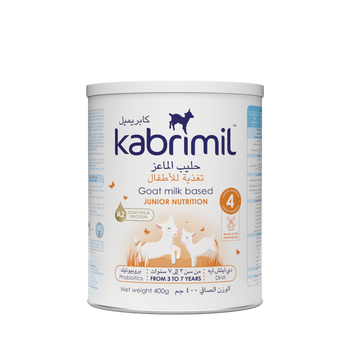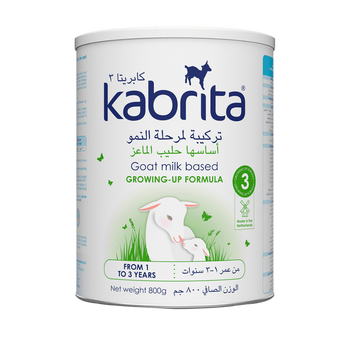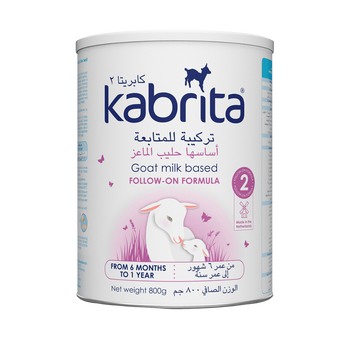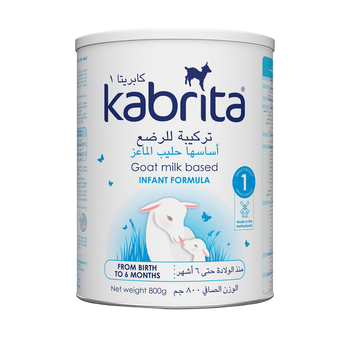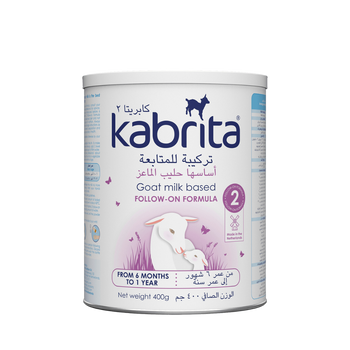Allergies, Sensitization & Other Problems
No, if someone is allergic to cow's milk, it is very likely that there will also be an allergic reaction to goat's milk. And the cause of allergy to cow's milk is the protein found in cow's milk. Although the protein in goat's milk is different and contains fewer allergens, there is still a high potential for cross-reaction. Therefore, we do not recommend using goat's milk as a substitute if you are allergic to cow's milk.
Fortunately, clinically proven allergy to cow's milk is very rare (only 1 to 3 percent of children under six have this condition), while a much larger group suffers from digestion problems after consuming cow's milk products. Those users may suffer from a condition called cow's milk allergy, in which components in the milk - either the fat or the protein or both - are improperly digested. It is likely that these people will benefit from switching to goat's milk-based nutrition.
If you are allergic to cow's milk, the components in the milk - either the fat, the protein, or both - are improperly digested. Goat's milk is naturally easy to digest and can therefore be a very suitable alternative if an allergy to cow's milk occurs.
Yes, Kabrita infant and toddler milk contains lactose. If your child is lactose intolerant, he will need lactose-free food products. However, true lactose intolerance (lactase deficiency) is a very rare condition among infants and young children, so be sure to consult your doctor to examine the child and confirm this condition.
Yes, goat milk is naturally easy to digest and contains less allergenic proteins, so it is a suitable alternative to start with after a milk-free period. In countries like Russia, the procedure for using goat's milk is to stop consuming the milk for a while before starting to eat it.
Please always consult your physician if you are considering using goat's milk after a milk-free period due to severe allergies.
Cow's milk allergy, cow's milk allergy, and lactose intolerance are different conditions, which are sometimes mishandled because their symptoms can be similar, leading to confusion.
In the case of a proven (clinical) cow's milk allergy, an immediate reaction of the immune system occurs in response to the protein in the cow's milk. This usually occurs within two hours of food entering the stomach and leads to moderate to severe symptoms, which can include:
- Swelling around the mouth
- Difficulty swallowing
- Vomiting and reflux
- Severe diarrhea
- Refuse food
- Growth failure
- Colic
- In rare cases, anaphylactic shock leading to death
An allergy to cow's milk can occur when cow's milk—either the fat, the protein, or both—is improperly digested.
This results in symptoms that can be mild to moderate and can affect the skin, gastrointestinal tract, and respiratory tract. Symptoms can take days, weeks, or even months to appear, and can include:
- Mild to moderate eczema
- A rash in the nappy area
- Abdominal pain
- Gases
- Bloating
- Constipation
- Soft stools
- Colic
- Lung and nasal congestion
As for lactose intolerance, it causes symptoms due to lactose malabsorption. Lactose is present in all milk produced by mammals (including humans) and is also called milk sugar. Lactose indigestion occurs in many cases after weaning and may lead to symptoms such as those described below and in that case is referred to as lactose intolerance.
- Flatulence and abdominal cramps
- Diarrhea
- Nausea
- Stomach sounds
- Vomiting
If you are unsure about a condition that may be causing problems for you or your baby, always consult your doctor before switching to alternative products such as goat's milk.
